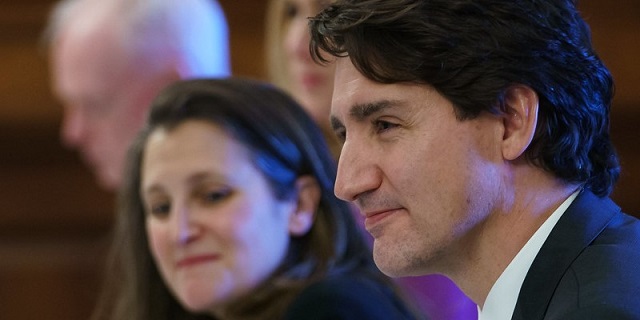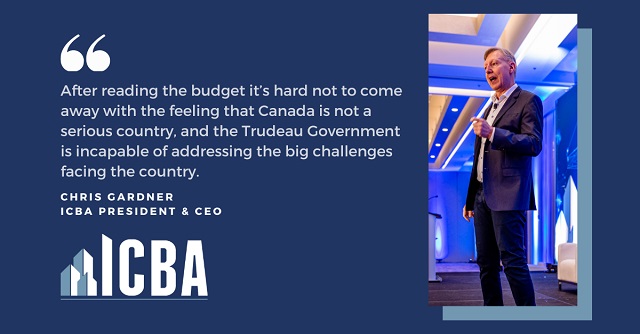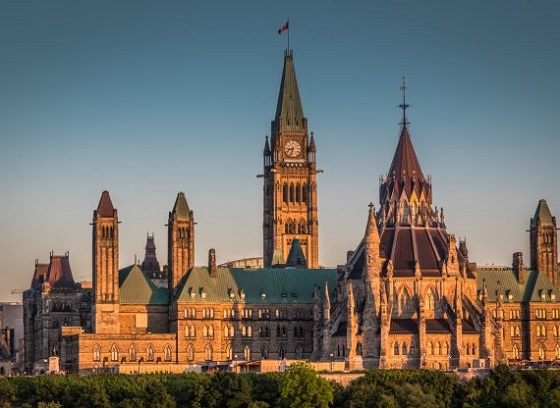Business
Business Spotlight – Calgary Entrepreneurs Bring The Gig Economy To Alberta

Gig work has been a popular subject as of late, interesting that younger generations of Albertans are up against a lot, including a historical economic downturn, a major decrease in unionized and salary jobs, competing with experienced furloughed workers and are simply left scratching their head after putting in thousands of hours and dollars to get a formal education. Combine that with an unemployment rate of 15.5% reported as of May 2020, up from 6.7% the same time last year, we are left with a pretty grim outlook for younger generations of Albertans.
What Is Gig Work?
Gig work can be referred to as self employed or simply contract, consulting or freelance work, where you as the service provider offer your skills at a preferred rate. This type of work is not new, but not only does it already consist of thousands of Canadian workers, Statistics Canada’s most recent data reported 1.7 million gig workers in Canada in 2016. Not the security we were taught to seek in our youth, but can offer a new level of freedom for those who wish to choose their work schedule, offer their skillset and grow their own personal brand.

Source: The Accelerator – From Left: CEO, Karshil Desai, CCO, Sara Mir, CSO, Shawn Moghaddami and CMO, Ankit Patel.
Incredible Minds Can Do Incredible Things
Meet the Skilli team, a group of four like minded entrepreneurs collaborating to bring the gig economy to Alberta. Having worked in Fort McMurray in Alberta, they experienced the extent of what ‘hard work’ means for our citizens while spending time working in the Alberta Oil and Gas industry. Respect to the many hard working individuals who have overcome fires and floods in that area over the last number of years, their community resilience is inspirational. CEO Karshil Desai speaks about witnessing an opportunity while living there that would prove to be the foundation for Skilli:
“…working in software and automation in the oil and gas sector in Fort MacMurray, I was around a lot of people who made good money offering their unique skills and services…due to the economic downturn, it was unfortunate to see so many people getting laid off, but still needed to pay their bills…I noticed a huge gap in how skilled services were offered and how they were hired by the consumer..”
Skilli is a mobile platform that provides freelancers, contractors and service providers a place to market themselves as their own brand. There can be many challenges with traditional methods of gig work, such as finding who can provide the service you need, getting their contact details, scheduling the service, quality control of the work and invoicing for payment after the fact. I am sure there has been millions of dollars spent from word of mouth referrals for what was actually a poor quality deliverable on too many occasions. Validation is a crucial part of the Skilli process for those offering their service, as part of that process, they put the service provider first, thus providing the highest level of customer satisfaction to the end user. CSO for Skilli, Shawn Moghaddami mentions:
“…we see the value of the gig economy in Alberta, with such a large talented workforce here…for us, it is ultimately about putting the service provider first so the customer is the one that benefits…we provide the tools they need, they have the platform behind them and the support to build their own brand.”
The Skilli App You Need To Watch Out For
Combining passion to help a wider community, their experience around contract work and their education on the gig economy, the team have developed their app where the platform can be utilized from anywhere. As mentioned, this type of self employment can offer a higher level of freedom than the traditional 40 hour nine-to-five. Work for yourself and lean on their knowledge base for resources on how to establish your profile, process payments, professional validation and build your confidence as a freelancer or contractor. Unfortunately the app is not available yet in Alberta, however they are proactively validating service providers for the launch of their newest version in early July. There is hope for those who can offer services and are having difficulty finding employment. Something we can all look forward to in these trying times.

Invest In Yourself
Want to be a part of what will be established as the ‘new economy’? Now is the time to re-evaluate the value you possess. Take a course, improve your skills, invest in supplies you need to offer a service as an individual or begin to construct a portfolio of previous work. Contract work has been around for a very long time, the stigma of it not being a successful career choice for your whole life is dying. Take control of your future by working for yourself. The gig economy is here and will continue to become a major part of what we call the ‘new normal’, to that point everyone here at Todayville wishes the Skilli team the best of success with the launch of their new app and look forward to their launch in early July.
Considering becoming a service provider or seeking information?
If you would like to learn more about Skilli or their new app. Visit their website here or social media links below.

For more stories, visit Todayville Calgary
Business
Canada’s economy has stagnated despite Ottawa’s spin

From the Fraser Institute
By Ben Eisen, Milagros Palacios and Lawrence Schembri
Canada’s inflation-adjusted per-person annual economic growth rate (0.7 per cent) is meaningfully worse than the G7 average (1.0 per cent) over this same period. The gap with the U.S. (1.2 per cent) is even larger. Only Italy performed worse than Canada.
Growth in gross domestic product (GDP), the total value of all goods and services produced in the economy annually, is one of the most frequently cited indicators of Canada’s economic performance. Journalists, politicians and analysts often compare various measures of Canada’s total GDP growth to other countries, or to Canada’s past performance, to assess the health of the economy and living standards. However, this statistic is misleading as a measure of living standards when population growth rates vary greatly across countries or over time.
Federal Finance Minister Chrystia Freeland, for example, recently boasted that Canada had experienced the “strongest economic growth in the G7” in 2022. Although the Trudeau government often uses international comparisons on aggregate GDP growth as evidence of economic success, it’s not the first to do so. In 2015, then-prime minister Stephen Harper said Canada’s GDP growth was “head and shoulders above all our G7 partners over the long term.”
Unfortunately, such statements do more to obscure public understanding of Canada’s economic performance than enlighten it. In reality, aggregate GDP growth statistics are not driven by productivity improvements and do not reflect rising living standards. Instead, they’re primarily the result of differences in population and labour force growth. In other words, they aren’t primarily the result of Canadians becoming better at producing goods and services (i.e. productivity) and thus generating more income for their families. Instead, they primarily reflect the fact that there are simply more people working, which increases the total amount of goods and services produced but doesn’t necessarily translate into increased living standards.
Let’s look at the numbers. Canada’s annual average GDP growth (with no adjustment for population) from 2000 to 2023 was the second-highest in the G7 at 1.8 per cent, just behind the United States at 1.9 per cent. That sounds good, until you make a simple adjustment for population changes by comparing GDP per person. Then a completely different story emerges.
Canada’s inflation-adjusted per-person annual economic growth rate (0.7 per cent) is meaningfully worse than the G7 average (1.0 per cent) over this same period. The gap with the U.S. (1.2 per cent) is even larger. Only Italy performed worse than Canada.
Why the inversion of results from good to bad? Because Canada has had by far the fastest population growth rate in the G7, growing at an annualized rate of 1.1 per cent—more than twice the annual population growth rate of the G7 as a whole at 0.5 per cent. In aggregate, Canada’s population increased by 29.8 per cent during this time period compared to just 11.5 per cent in the entire G7.
Clearly, aggregate GDP growth is a poor tool for international comparisons. It’s also not a good way to assess changes in Canada’s performance over time because Canada’s rate of population growth has not been constant. Starting in 2016, sharply higher rates of immigration have led to a pronounced increase in population growth. This increase has effectively partially obscured historically weak economic growth per person over the same period.
Specifically, from 2015 to 2023, under the Trudeau government, inflation-adjusted per-person economic growth averaged just 0.3 per cent. For historical perspective, per-person economic growth was 0.8 per cent annually under Brian Mulroney, 2.4 per cent under Jean Chrétien and 2.0 per cent under Paul Martin.
Due to Canada’s sharp increase in population growth in recent years, aggregate GDP growth is a misleading indicator for comparing economic growth performance across countries or time periods. Canada is not leading the G7, or doing well in historical terms, when it comes to economic growth measures that make simple adjustments for our rapidly growing population. In reality, we’ve become a growth laggard and our living standards have largely stagnated for the better part of a decade.
Authors:
Fraser Institute
Powerful players count on corruption of ideal carbon tax

From the Fraser Institute
Prime Minister Trudeau recently whipped out the big guns of rhetoric and said the premiers of Alberta, Nova Scotia, New Brunswick, Newfoundland and Labrador, Ontario, Prince Edward Island and Saskatchewan are “misleading” Canadians and “not telling the truth” about the carbon tax. Also recently, a group of economists circulated a one-sided open letter extolling the virtues of carbon pricing.
Not to be left out, a few of us at the Fraser Institute recently debated whether the carbon tax should or could be reformed. Ross McKitrick and Elmira Aliakbari argued that while the existing carbon tax regime is badly marred by numerous greenhouse gas (GHG) regulations and mandates, is incompletely revenue-neutral, lacks uniformity across the economy and society, is set at an arbitrary price and so on, it remains repairable. “Of all the options,” they write, “it is widely acknowledged that a carbon tax allows the most flexibility and cost-effectiveness in the pursuit of society’s climate goals. The federal government has an opportunity to fix the shortcomings of its carbon tax plan and mitigate some of its associated economic costs.”
I argued, by contrast, that due to various incentives, Canada’s relevant decision-makers (politicians, regulators and big business) would all resist any reforms to the carbon tax that might bring it into the “ideal form” taught in schools of economics. To these groups, corruption of the “ideal carbon tax” is not a bug, it’s a feature.
Thus, governments face the constant allure of diverting tax revenues to favour one constituency over another. In the case of the carbon tax, Quebec is the big winner here. Atlantic Canada was also recently won by having its home heating oil exempted from carbon pricing (while out in the frosty plains, those using natural gas heating will feel the tax’s pinch).
Regulators, well, they live or die by the maintenance and growth of regulation. And when it comes to climate change, as McKitrick recently observed in a separate commentary, we’re not talking about only a few regulations. Canada has “clean fuel regulations, the oil-and-gas-sector emissions cap, the electricity sector coal phase-out, strict energy efficiency rules for new and existing buildings, new performance mandates for natural gas-fired generation plants, the regulatory blockade against liquified natural gas export facilities” and many more. All of these, he noted, are “boulders” blocking the implementation of an ideal carbon tax.
Finally, big business (such as Stellantis-LG, Volkswagen, Ford, Northvolt and others), which have been the recipients of subsidies for GHG-reducing activities, don’t want to see the driver of those subsidies (GHG regulations) repealed. And that’s only in the electric vehicle space. Governments also heavily subsidize wind and solar power businesses who get a 30 per cent investment tax credit though 2034. They also don’t want to see the underlying regulatory structures that justify the tax credit go away.
Clearly, all governments that tax GHG emissions divert some or all of the revenues raised into their general budgets, and none have removed regulations (or even reduced the rate of regulation) after implementing carbon-pricing. Yet many economists cling to the idea that carbon taxes are either fine as they are or can be reformed with modest tweaks. This is the great carbon-pricing will o’ the wisp, leading Canadian climate policy into a perilous swamp.
Author:
-

 Economy12 hours ago
Economy12 hours agoExtreme Weather and Climate Change
-

 Jordan Peterson1 day ago
Jordan Peterson1 day agoJordan Peterson slams CBC for only interviewing pro-LGBT doctors about UK report on child ‘sex changes’
-

 Freedom Convoy1 day ago
Freedom Convoy1 day agoTrudeau’s use of Emergencies Act has cost taxpayers $73 million thus far
-

 Economy2 days ago
Economy2 days agoFederal budget’s scale of spending and debt reveal a government lacking self-control
-

 Alberta21 hours ago
Alberta21 hours agoDanielle Smith warns arsonists who start wildfires in Alberta that they will be held accountable
-

 Business1 day ago
Business1 day agoBusiness investment key to addressing Canada’s productivity crisis
-

 International10 hours ago
International10 hours agoTelegram founder tells Tucker Carlson that US intel agents tried to spy on user messages
-

 Business1 day ago
Business1 day agoDoubling Down on Missing the Mark











